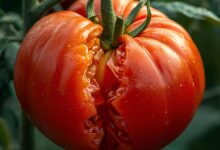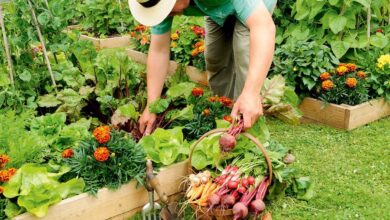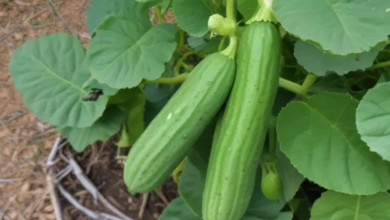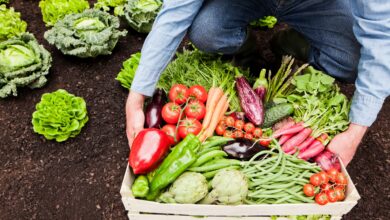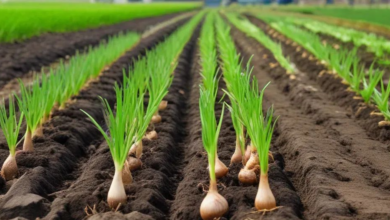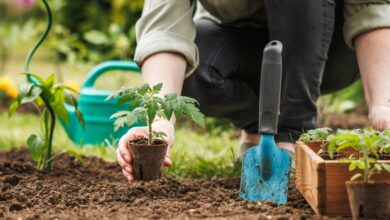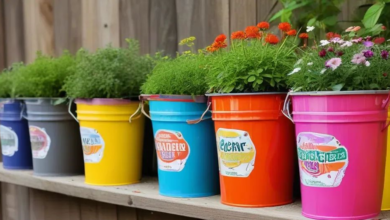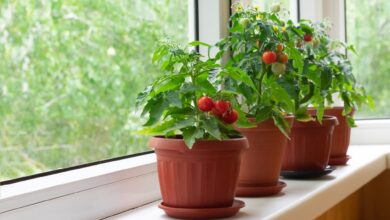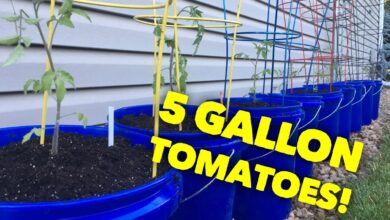The Ultimate Guide to Growing Lettuce Indoors Year-Round
Learn how to grow lettuce indoors year-round with our complete guide. Discover hydroponic systems, container methods, lighting tips & harvest.

Imagine stepping into your kitchen and harvesting crisp, fresh lettuce for your salad without ever stepping outside—even in the dead of winter. Growing lettuce indoors year-round has transformed from a gardening novelty into a practical solution for health-conscious individuals, urban dwellers, and anyone seeking independence from grocery store produce. Whether you’re dealing with limited outdoor space, harsh climate conditions, or simply want to ensure a constant supply of organic greens, indoor lettuce cultivation offers the perfect solution.
The beauty of growing lettuce indoors lies in its accessibility. Unlike many vegetables that demand extensive space, ideal weather conditions, and months of patience, lettuce thrives in compact environments and matures quickly—often in as little as 30 days. This fast-growing leafy green adapts remarkably well to indoor gardening setups, from simple windowsill containers to sophisticated hydroponic systems. With the right knowledge and minimal investment, you can create a sustainable indoor garden that produces fresh, pesticide-free greens throughout all four seasons.
This comprehensive guide will walk you through every aspect of indoor lettuce growing, from selecting the perfect varieties for your space to mastering environmental controls that ensure optimal growth. You’ll discover multiple cultivation methods, including traditional container gardening, innovative hydroponic lettuce systems, and even space-saving vertical gardens. We’ll demystify the essential requirements—lighting, temperature, humidity, and nutrition—that make the difference between mediocre results and abundant harvests.
Whether you’re a complete beginner taking your first steps into indoor vegetable gardening or an experienced grower looking to refine your techniques, this guide provides actionable insights backed by proven methods. You’ll learn how to troubleshoot common problems, prevent pests and diseases, and implement succession planting strategies that guarantee you’ll never run out of fresh salad greens. By the end of this article, you’ll have the confidence and knowledge to establish your own thriving indoor lettuce garden that delivers fresh, nutritious greens 365 days a year.
Why Growing Lettuce Indoors Year-Round
Growing lettuce indoors offers numerous advantages that extend far beyond simple convenience. Understanding these benefits can help you appreciate the value of establishing your own indoor garden and motivate you to get started.
Year-Round Fresh Produce
The most obvious benefit of indoor lettuce cultivation is the ability to harvest fresh greens regardless of external weather conditions. While outdoor gardens become dormant during winter months, your Growing Lettuce Indoors continues producing crisp, nutritious leaves. This consistent availability means you’re never dependent on seasonal fluctuations or weather-related crop failures that affect grocery store supplies and prices.
Superior Nutrition and Flavor
Homegrown lettuce harvested minutes before consumption retains significantly more nutrients than store-bought varieties that may have traveled thousands of miles and sat on shelves for days. The vitamin content, particularly vitamins A, C, and K, begins degrading immediately after harvest. Your indoor garden allows you to pick leaves at their peak nutritional value, ensuring maximum health benefits with every salad.
Cost-Effective Food Production
While initial setup requires some investment, growing lettuce indoors becomes remarkably economical over time. A single packet of seeds costing a few dollars can produce dozens of heads of lettuce, with each harvest representing significant savings compared to organic grocery store prices. The fast growth cycle means you’ll see returns on your investment within weeks.
Pesticide-Free and Organic Control
Growing Lettuce Indoors gives you complete control over what touches your food. Without exposure to outdoor pests, you eliminate the need for pesticides entirely. You choose your growing medium, nutrients, and water source, ensuring your salad greens are truly organic and free from harmful chemicals. This level of control is especially valuable for families with children or anyone with chemical sensitivities.
Space Efficiency and Accessibility
Indoor gardening doesn’t require a backyard or even significant floor space. A sunny windowsill, countertop, or small corner can accommodate a productive lettuce garden. This accessibility makes growing lettuce indoors ideal for apartment dwellers, urban residents, or anyone with limited outdoor growing space. Vertical growing systems maximize production in minimal square footage.
Educational and Therapeutic Benefits
Cultivating an Growing Lettuce Indoors provides hands-on learning opportunities for children and adults alike. The fast growth rate of lettuce offers near-immediate gratification, maintaining interest and enthusiasm. Many growers also report therapeutic benefits from nurturing plants, with indoor gardening serving as a stress-relieving hobby that yields tangible, edible results.
Choosing the Right Lettuce Varieties for Indoor Growing
Not all lettuce varieties perform equally well indoors. Selecting appropriate cultivars dramatically impacts your success rate and harvest quality. Understanding the characteristics of different types helps you make informed choices for your indoor garden.
Leaf Lettuce Varieties
Leaf lettuce represents the ideal choice for most indoor lettuce growers. These loose-leaf varieties don’t form tight heads, allowing you to harvest outer leaves continuously while the plant continues producing new growth. Popular options include ‘Black Seeded Simpson,’ ‘Red Sails,’ ‘Oak Leaf,’ and ‘Lollo Rosso.’ These varieties mature quickly—typically 30-45 days—and tolerate lower light conditions better than heading types, making them perfect for windowsill gardens or areas with moderate artificial lighting.
Butterhead Lettuce
Butterhead lettuce, including ‘Buttercrunch’ and ‘Boston’ varieties, forms loose heads with tender, buttery-textured leaves. These cultivars adapt well to indoor growing conditions and offer excellent flavor profiles. While they take slightly longer to mature than leaf lettuce (45-55 days), their delicate taste and attractive appearance make them worthwhile for indoor gardeners seeking premium salad greens.
Romaine Lettuce
Romaine lettuce varieties like ‘Little Gem’ and ‘Parris Island Cos’ can succeed indoors with proper lighting. These upright growers require more vertical space but offer crisp texture and robust flavor. Dwarf romaine varieties specifically bred for container culture perform best in indoor gardens. They typically need 60-70 days to reach full maturity, though you can begin harvesting outer leaves earlier.
Winter and Low-Light Varieties
Specific lettuce varieties bred for winter production or low-light conditions excel in indoor growing environments. Look for cultivars labeled ‘winter,’ ‘arctic,’ or ‘cold-hardy.’ These selections possess genetic adaptations that allow them to thrive with less intense light, making them ideal for locations where providing optimal illumination proves challenging.
Mesclun and Mixed Greens
Mesclun mixes combine multiple lettuce varieties along with other greens like arugula, mustard, and endive. These seed blends provide diverse flavors and textures while spreading risk—if one variety struggles, others compensate. The varied maturation times ensure continuous harvests, and the mixed appearance creates visually appealing salad bowls.
Avoiding Problematic Varieties
Some lettuce types prove challenging for indoor cultivation. Crisphead varieties like iceberg require extensive space, long growing periods, and precise conditions rarely achievable indoors. Their tight heads also make them more susceptible to rot in the potentially humid indoor environment. Focus your efforts on the more adaptable loose-leaf, butterhead, and compact romaine varieties.
Essential Requirements for Growing Lettuce Indoors
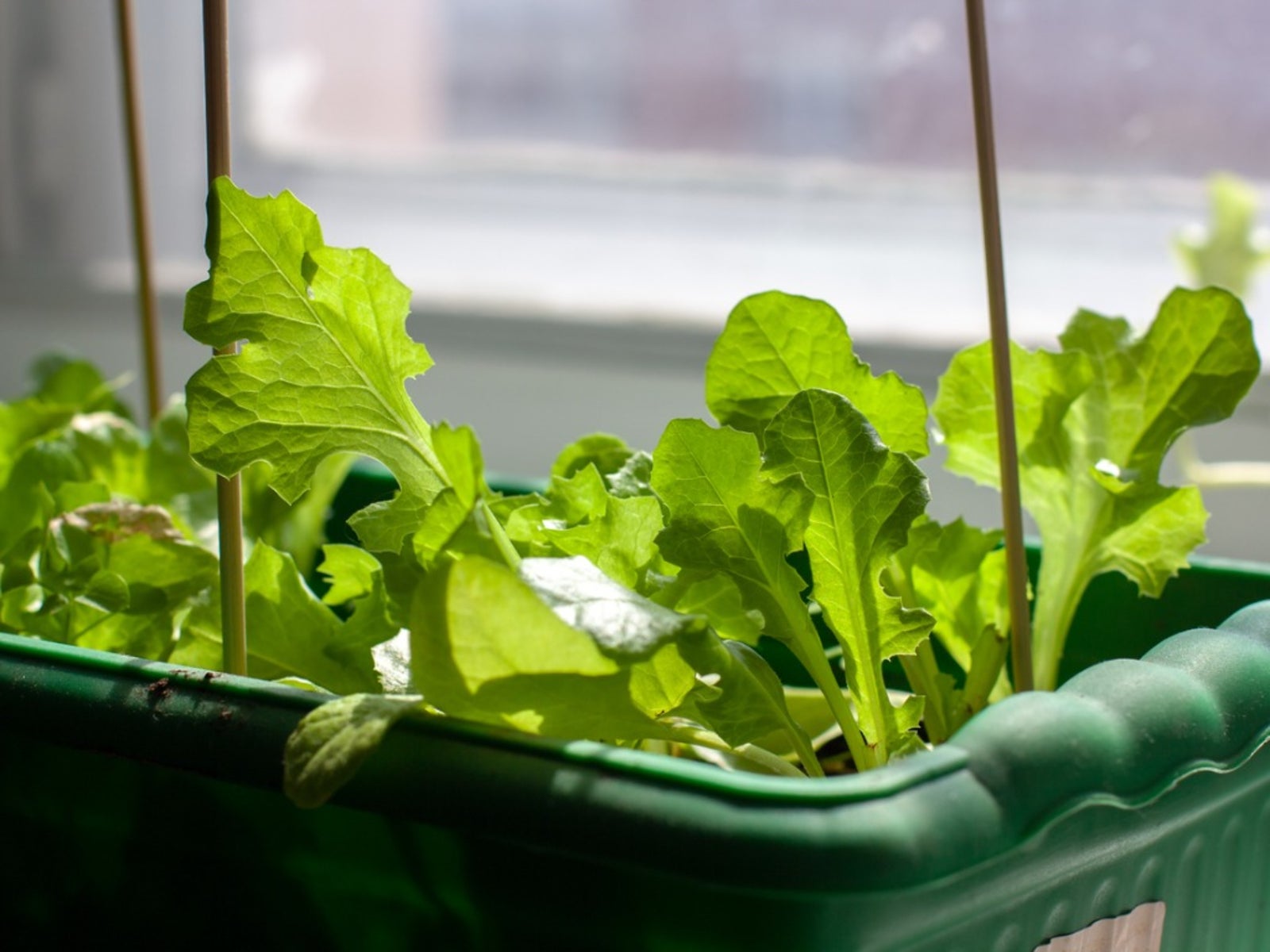
Success with indoor lettuce growing depends on meeting specific environmental and nutritional requirements. Understanding and controlling these factors transforms mediocre results into abundant harvests.
Light Requirements
Light represents the most critical factor in growing lettuce indoors. Lettuce needs 12-16 hours of light daily for optimal growth. While a south-facing window provides adequate illumination in some cases, most indoor gardens benefit significantly from supplemental grow lights. LED grow lights offer the best combination of energy efficiency, spectrum control, and minimal heat output. Position lights 6-12 inches above plants, adjusting height as lettuce grows. Full-spectrum bulbs that provide both blue light (for leaf growth) and red light (for overall plant health) deliver superior results.
Temperature Control
Lettuce is a cool-season crop that thrives in temperatures between 60-70°F (15-21°C). This temperature range aligns well with typical indoor environments, making growing lettuce indoors particularly convenient. Temperatures above 75°F can trigger bolting (premature flowering), which makes leaves bitter and ends productive growth. Temperatures below 50°F slow growth significantly. Maintain consistent temperatures by avoiding placement near heating vents, cold drafts from windows, or heat-producing appliances.
Humidity Considerations
Indoor lettuce prefers relative humidity between 40-60%. Most homes naturally fall within this range, though heating systems in winter can create excessively dry conditions. Low humidity causes leaf edges to brown and crisp. Simple solutions include grouping plants together (they create their own microclimate), placing containers on pebble-filled trays with water, or using a small humidifier. Avoid excessive humidity above 70%, which promotes fungal diseases and rot.
Air Circulation
Proper air movement strengthens plants, prevents fungal issues, and improves overall health in your indoor garden. Stagnant air encourages mold and disease while producing weak, leggy plants. A small oscillating fan set on low speed provides sufficient air movement. Position the fan to create gentle movement without directly blasting plants. Good air circulation also helps regulate temperature and humidity while strengthening plant stems.
Water Quality and pH
Water quality significantly impacts lettuce growth. Tap water works fine in most areas, though letting it sit overnight allows chlorine to dissipate. The ideal pH range for lettuce is 6.0-7.0, slightly acidic to neutral. Excessively hard or soft water may require adjustment. If using hydroponic systems, monitor and adjust pH regularly, as nutrient uptake efficiency depends heavily on maintaining proper pH levels. Room-temperature water prevents temperature shock to roots.
Nutrient Requirements
Lettuce is a relatively light feeder but still requires balanced nutrition. For container-grown lettuce, use quality potting mix amended with compost or worm castings. Supplement with balanced liquid fertilizer (such as 10-10-10 or fish emulsion) diluted to half-strength every two weeks. For hydroponic lettuce, use a complete hydroponic nutrient solution formulated for leafy greens, following manufacturer recommendations. Nitrogen supports leafy growth, while phosphorus and potassium ensure overall plant health.
Growing Methods: Container vs. Hydroponic Systems
Indoor lettuce cultivation can be accomplished through multiple methods, each with distinct advantages. Understanding these approaches helps you select the system best suited to your space, budget, and goals.
Container Growing with Soil
- Container gardening represents the most accessible entry point for growing lettuce indoors. This traditional method requires minimal specialized equipment and feels familiar to most gardeners.
- Container Selection: Choose containers at least 6-8 inches deep with adequate drainage holes. Width matters more than depth for lettuce, as roots spread laterally. Individual 6-inch pots work well for single plants, while larger rectangular containers can accommodate multiple plants spaced 4-6 inches apart. Food-grade plastic, ceramic, or wood containers all work effectively.
- Soil Requirements: Use high-quality potting mix specifically formulated for containers—never garden soil, which compacts and drains poorly indoors. Quality potting mix contains peat moss or coir, perlite or vermiculite for drainage, and often some compost. The loose, well-aerated structure promotes healthy root development essential for vigorous lettuce growth.
- Planting and Maintenance: Sow seeds 1/4 inch deep, thinning seedlings to proper spacing once they develop true leaves. Keep soil consistently moist but never waterlogged. Container-grown lettuce requires regular monitoring, as pots dry out faster than garden beds. Water when the top inch of soil feels dry, ensuring excess drains freely.
Hydroponic Growing Systems
- Hydroponic lettuce growing eliminates soil entirely, delivering nutrients through water solutions. This method typically produces faster growth, larger yields, and cleaner harvests.
- Deep Water Culture (DWC): The simplest hydroponic system suspends plant roots in oxygenated nutrient solution. A basic DWC setup uses a bucket or tote, net pots, growing medium (like expanded clay pellets), an air pump, and air stone. Lettuce thrives in DWC, often maturing 25% faster than soil-grown plants. Maintain solution levels, monitor pH (5.5-6.5 for hydroponics), and change water every two weeks.
- Kratky Method: This passive hydroponic technique requires no electricity or pumps. Plants sit in net pots above a reservoir of nutrient solution. As plants consume water, the level drops, creating an air gap that provides oxygen to roots. The Kratky method works exceptionally well for lettuce and appeals to beginners seeking low-maintenance hydroponic growing.
- Nutrient Film Technique (NFT): This advanced system continuously flows a thin film of nutrient solution past plant roots in sloped channels. While more complex than DWC or Kratky, NFT systems maximize space efficiency and can support larger indoor lettuce operations. Pumps circulate solution from a reservoir through growing channels and back, providing constant nutrient delivery and oxygenation.
Choosing Between Soil and Hydroponics
Container growing advantages include lower startup costs, familiar techniques, and forgiving nature—soil acts as a buffer against nutrient imbalances. Hydroponic systems offer faster growth, higher yields, cleaner harvests, and more efficient water usage. Your choice depends on budget, available space, desired production level, and personal preference. Many indoor gardeners eventually maintain both systems, enjoying soil’s simplicity alongside hydroponics’ productivity.
Step-by-Step Guide to Growing Lettuce Indoors
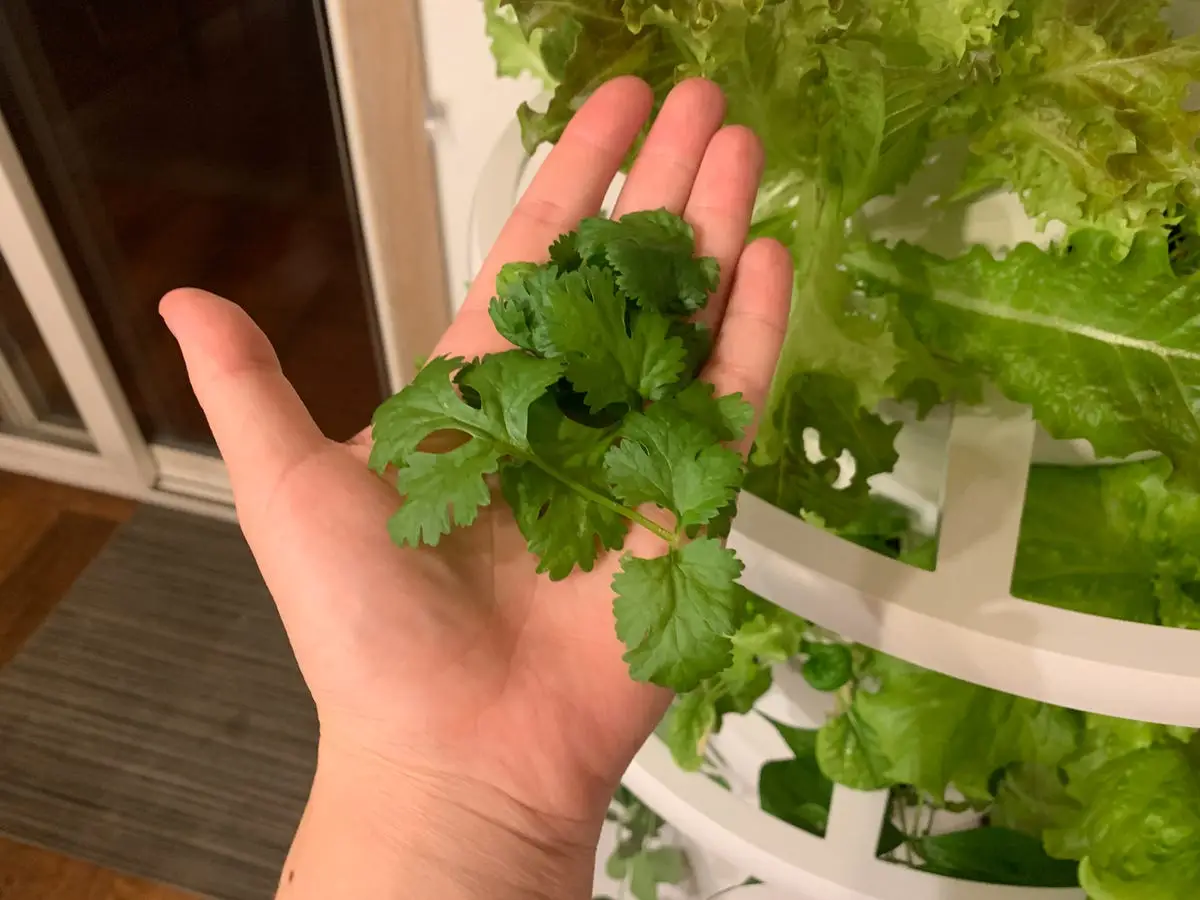
This practical walkthrough covers the complete process of growing lettuce indoors, from seed to harvest, ensuring success for beginners and useful tips for experienced growers.
Germinating Lettuce Seeds
Start lettuce seeds in small containers, seed trays, or directly in their final growing location. Lettuce germinates best at temperatures between 65-70°F. Sow seeds on the surface of moist growing medium, barely covering them with a thin layer (1/4 inch maximum) of soil or vermiculite. Lettuce seeds need light to germinate optimally, so avoid burying them deeply. Maintain consistent moisture—mist regularly or cover with plastic wrap until germination, which typically occurs within 7-10 days.
Providing Adequate Lighting
Once seedlings emerge, immediately provide strong light to prevent leggy, weak growth. Position grow lights 6-12 inches above seedlings, maintaining this distance as plants grow. Run lights 12-16 hours daily, using a timer for consistency. If growing in a sunny window, rotate containers regularly for even growth. Insufficient light produces pale, stretched plants with poor flavor, so lighting quality cannot be compromised.
Thinning Seedlings
When seedlings develop their first true leaves (the second set of leaves, which look like miniature adult leaves), thin to final spacing. For leaf lettuce, maintain 4-6 inches between plants. Butterhead and romaine varieties need 6-8 inches. Snip extra seedlings at soil level rather than pulling, which disturbs neighboring roots. The removed micro-greens are edible and delicious.
Watering and Feeding
Container-grown lettuce needs consistent moisture without waterlogging. Water when the top inch of soil feels dry, typically every 1-3 days depending on container size, temperature, and humidity. Pour water until it drains from bottom holes, ensuring roots receive adequate moisture. Begin fertilizing two weeks after germination, using diluted liquid fertilizer every 10-14 days. Hydroponic lettuce requires monitoring solution levels, maintaining pH at 5.5-6.5, and completely changing nutrient solution every two weeks.
Monitoring Growth and Environment
Regularly check your indoor lettuce garden for signs of stress. Yellowing leaves may indicate nutrient deficiency or overwatering. Purple-tinged leaves suggest cold temperatures or phosphorus deficiency. Pale, leggy growth indicates insufficient light. Brown, crispy leaf edges point to low humidity or irregular watering. Address issues promptly—lettuce’s fast growth means problems escalate quickly, but corrections also show rapid results.
Harvesting Lettuce
Leaf lettuce can be harvested using the “cut and come again” method. Once plants reach 4-6 inches tall (typically 3-4 weeks after germination), harvest outer leaves, leaving the central growing point intact. Plants continue producing new leaves for weeks. Heading varieties can be harvested either as full heads (once hearts form solidly) or using the same leaf-by-leaf method. Morning harvests capture lettuce at peak crispness and moisture content.
Succession Planting
For continuous lettuce production, practice succession planting. Start new seeds every 2-3 weeks. This staggered approach ensures you always have plants at various growth stages, providing uninterrupted harvests. Maintain 3-4 different planting cohorts for optimal production. As older plants decline or bolt, new plantings mature to replace them, creating a perpetual indoor salad garden.
Common Problems and Solutions
Even with proper care, indoor lettuce growers occasionally encounter challenges. Recognizing and addressing issues quickly protects your harvest.
Bolting and Bitter Flavor
Bolting occurs when lettuce prematurely produces flower stalks, causing leaves to become bitter and inedible. Heat represents the primary trigger—temperatures consistently above 75°F signal lettuce to reproduce rather than produce leaves. Prevent bolting by maintaining cool temperatures, ensuring adequate light (ironically, insufficient light also causes bolting), and choosing bolt-resistant varieties. Once bolting begins, harvest immediately or start fresh plants.
Leggy, Weak Growth
Stretched, pale plants with long, thin stems result from insufficient light. Lettuce receiving inadequate illumination expends energy reaching toward light rather than producing robust leaves. Correct this by moving plants closer to grow lights, increasing light duration to 14-16 hours daily, or upgrading to more powerful bulbs. Prevention is easier than correction, as leggy plants rarely recover fully.
Fungal Diseases and Damping Off
“Damping off” kills seedlings at the soil line, caused by various fungal pathogens thriving in overly moist conditions. Adult plants may develop gray mold (botrytis) or powdery mildew. Prevent fungal issues by improving air circulation, avoiding overwatering, ensuring proper drainage, and not wetting leaves during watering. If fungal disease appears, remove affected plants immediately to prevent spread, increase air movement, and reduce humidity.
Aphids and Other Pests
While Growing Lettuce Indoors face fewer pests than outdoor plots, aphids occasionally appear, particularly if you bring outdoor plants inside. These tiny insects cluster on new growth, sucking plant juices. Inspect plants regularly, especially undersides of leaves. Remove aphids by spraying with water, wiping leaves with soapy water, or using insecticidal soap. Severe infestations may require discarding affected plants. Fungus gnats sometimes appear in constantly moist soil but rarely harm lettuce directly.
Nutrient Deficiencies
Nitrogen deficiency causes older leaves to turn yellow while new growth remains green. Increase fertilization frequency or concentration. Iron deficiency creates yellowing between leaf veins, particularly on new growth, often caused by pH problems preventing iron uptake—adjust pH to the optimal range. Calcium deficiency causes leaf edge burn and tipburn on inner leaves, corrected by ensuring adequate calcium in fertilizers or adjusting water chemistry.
Root Problems
Root rot occurs in overwatered container-grown lettuce or hydroponic systems with insufficient oxygen. Brown, mushy roots indicate rot, while healthy roots appear white and firm. Improve drainage in containers, reduce watering frequency, and ensure adequate air circulation in hydroponic reservoirs using air stones. Prevention through proper watering practices and system design is essential, as root rot rarely reverses once established.
Advanced Tips for Maximum Production
Once you’ve mastered basic Growing Lettuce Indoors, these advanced techniques boost yields and quality.
Optimizing Light Spectrum
Different light wavelengths affect lettuce differently. Blue light (400-500nm) promotes compact, leafy growth—ideal for lettuce production. Red light (600-700nm) triggers flowering but also enhances overall growth when combined with blue. Full-spectrum LED grow lights provide both wavelengths, but you can fine-tune results by adjusting the ratio. Higher blue light ratios produce more compact, darker green leaves with potentially higher antioxidant content.
Temperature Differential Strategies
Professional growers often employ slight temperature variations between day and night to optimize lettuce quality. Daytime temperatures of 65-68°F combined with nighttime temperatures of 55-60°F can produce more compact, flavorful lettuce while reducing energy costs. This differential also slows growth slightly, potentially improving texture and taste. Indoor temperature control allows you to experiment with these refinements.
CO2 Supplementation
In sealed Growing Lettuce Indoors environments with excellent lighting and nutrition, carbon dioxide sometimes becomes the limiting factor in growth. Increasing CO2 concentration to 1,000-1,200 ppm (compared to ambient 400 ppm) can boost lettuce growth rates significantly. However, CO2 supplementation requires sophisticated monitoring and ventilation equipment, making it appropriate only for serious indoor growers with substantial setups.
Vertical Growing Systems
Maximize production in limited space using vertical Growing Lettuce Indoors systems. Tower gardens, wall-mounted pockets, and stacked shelves with individual lights multiply growing area. Vertical hydroponic towers efficiently use floor space while producing impressive quantities of lettuce. Consider vertical options if your horizontal space is constrained but you have unused vertical space.
Microgreens and Baby Greens
Lettuce microgreens offer intense flavor and nutrition in a compact package, harvested just 7-14 days after seeding. Sow seeds densely in shallow trays, provide light, and harvest when seedlings are 1-2 inches tall. Baby lettuce greens harvested at 3-4 weeks offer a middle ground between microgreens and mature heads. Both approaches increase the variety and nutritional diversity of your indoor garden while providing extremely fast yields.
Also Read: 12 Fast-Growing Vegetables You Can Harvest in 30 Days
Conclusion
Growing lettuce indoors year-round transforms your relationship with fresh produce, providing reliable access to crisp, nutritious salad greens regardless of season or climate. From simple container gardens on kitchen windowsills to sophisticated hydroponic systems producing restaurant-quality harvests, indoor lettuce cultivation accommodates every skill level, space constraint, and budget. Success hinges on understanding and controlling the key environmental factors—adequate lighting, appropriate temperatures, consistent moisture, and proper nutrition.
Whether you choose forgiving soil-based methods or experiment with efficient hydroponics, the fast growth cycle and continuous harvest potential of lettuce rewards your efforts quickly. By implementing the techniques outlined in this guide—selecting suitable varieties, providing optimal growing conditions, practicing succession planting, and troubleshooting problems promptly—you’ll establish a productive indoor garden that supplies your household with fresh, pesticide-free greens throughout the entire year. The journey from seed to salad bowl happens in your own home, offering not just food security and cost savings, but the profound satisfaction of cultivating your own nourishment regardless of what’s happening outside your door.
